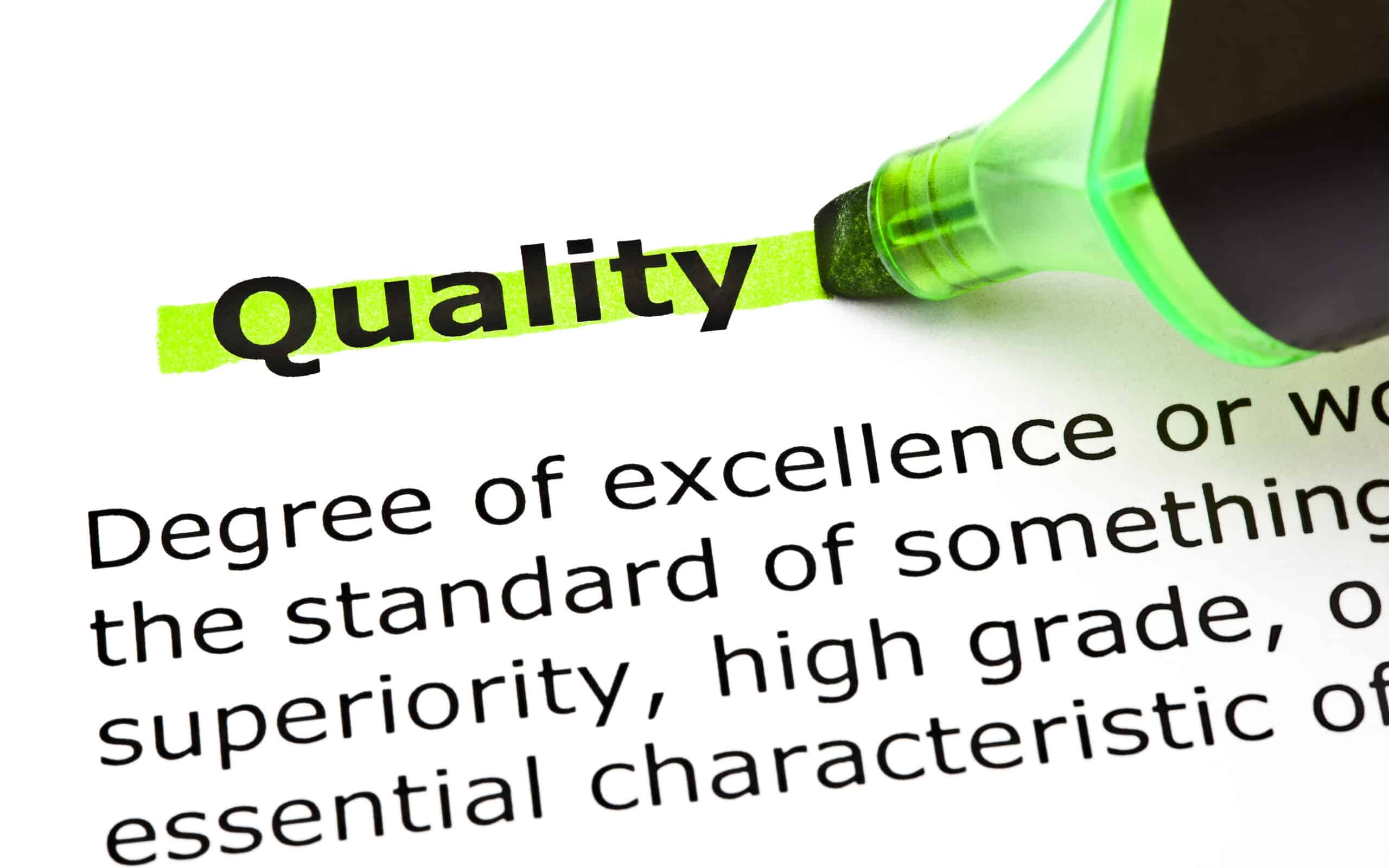
Quality is one of those words and concepts that have many meanings. Let’s review the concept and discuss the different definitions associated with the term.
It refers to the degree of excellence or superiority of something, often concerning its intended purpose or function. Further, it is a measure of how well something meets its specifications or requirements, and how well it satisfies the needs and expectations of its users or stakeholders.
Of course, the term can be subjective and can vary depending on the context, the perspective, and the criteria used to evaluate it. However, some common factors that are often associated with high quality include reliability, durability, efficiency, effectiveness, safety, usability, functionality, and aesthetics.
What Is Quality?
Philip Crosby (1926-2001) was an influential author, consultant, and philosopher who developed practical concepts to define and communicate the term with practices to improve it. As such, Crosby’s definition of the term was simple. He said that good, bad, high, and low quality are meaningless concepts. However, Crosby felt that the only relevant definition for the word is conformance to requirements.
The concept of “Quality is Free” was popularized by Philip B. Crosby in his 1979 book of the same title. Furthermore, the idea behind this concept is that the cost of a poor deliverable is much higher than the cost of ensuring a good deliverable from the outset.
In other words, investing in solid management processes and systems can save money in the long run, by reducing the costs of rework, scrap, and customer complaints. Subsequently, Crosby argued that by focusing on prevention rather than correction. As such, organizations can achieve high levels of quality without incurring additional costs.
According to Crosby, the cost of poor production includes the costs of defects, rework, inspections, warranties, customer complaints, and lost business opportunities. However, by addressing these costs through a focus on improvement. Moreover, organizations can not only save money but also improve customer satisfaction and loyalty. Here are two interesting quotes from Crosby concerning the subject:


Defining Quality for Your Organization
Today, the word is used in a variety of applications. Some of these are:
- Quality control – This refers to the process of ensuring that products or services meet specified quality standards. As such, it involves inspecting, testing, and verifying products or services to identify defects or issues before they are delivered to customers.
- Quality assurance -This refers to the process of ensuring that products or services meet customer requirements and expectations. It involves planning, designing, and implementing systems and processes to ensure that quality standards are met.
- Total quality management – This is a management approach that emphasizes the importance of quality in all aspects of a business. Accordingly, it involves continuous improvement, customer focus, and teamwork, to meet or exceed customer expectations.
- Quality improvement – This refers to the process of making changes to products, services, or processes to improve the output. It can involve identifying and eliminating defects, reducing costs, and increasing customer satisfaction.
- Quality standards – These are established criteria or specifications for the quality of products or services. They can be set up by organizations or by industry associations and are used to ensure consistency and reliability in the quality of products or services.
- Quality metrics – These are measurements used to assess the quality of products or services. As such, they can include customer satisfaction ratings, defect rates, or other key performance indicators that are used to monitor and improve processes over time.
An Industry Example of Quality

One industry example of this term is the pharmaceutical industry. Accordingly, it is a critical factor in the pharmaceutical industry, as far as customers are concerned.
With this in mind, here are some examples of quality practices in the pharmaceutical industry include:
- Statistical process control (SPC) -This is a tool used to monitor and control the production process. This tool is used for collecting and analyzing data to identify variations and trends. SPC helps to identify and correct issues before they become more serious, reducing waste and improving efficiency.
- Quality management systems (QMS) – In the pharmaceutical industry, the term refers to the degree to which a drug substance or product meets its intended use. It also refers to how it fulfills its inherent properties. This definition includes essential attributes like the drug’s identity, strength, and purity. The quality of a drug is critical for patient safety and effective treatment. If a drug is contaminated or not pure, it could cause harm to patients. Similarly, if a drug is not potent enough, it may not be effective in treating the condition for which it was intended.
- Lean manufacturing – This is an approach that emphasizes continuous improvement and waste reduction. Pharmaceutical companies use lean manufacturing techniques to eliminate waste, increase efficiency, and improve quality.
- Six Sigma – This is a data-driven approach to quality management. Further, it focuses on identifying and eliminating defects and reducing variability in the production process. Pharmaceutical manufacturers and suppliers use Six Sigma to improve their products, reduce costs, and increase customer satisfaction.
- Failure mode and effects analysis (FMEA) – This is a process used to identify and address potential issues before they occur. Companies use FMEA to identify potential failures in their products and processes. Further, they then develop strategies to prevent or mitigate them.
Other Useful Concepts
While we’ve discussed the term and its contextual meaning in-depth, let’s look at some other concepts. TQM is a management approach focused on today’s subject in detail. As such, learning how to implement it in your organization can be a great way to focus on your customers.
Further, understanding the eight elements behind TQM is vital. Our comprehensive guide follows the approach, and just how flexible it can be from a corporate culture and production viewpoint.
Wrapping Up
Defining a term as nebulous as today’s subject can be daunting. However, in the context of your organization, there is only one definition that matters. While production is a constant push and pull of improvement and iteration, keeping customer satisfaction in mind is the way to go.